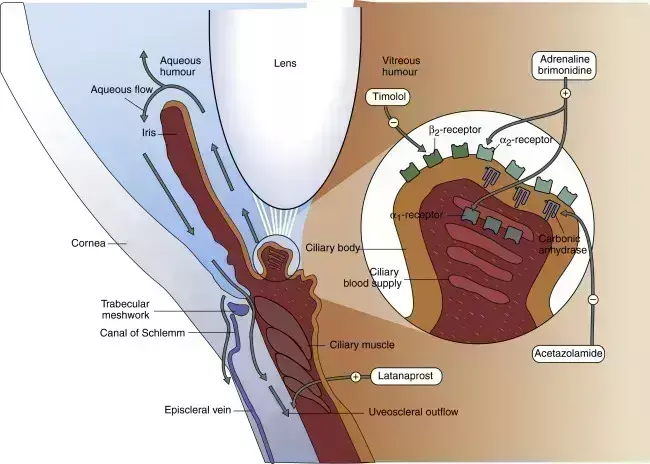- Home
- Medical news & Guidelines
- Anesthesiology
- Cardiology and CTVS
- Critical Care
- Dentistry
- Dermatology
- Diabetes and Endocrinology
- ENT
- Gastroenterology
- Medicine
- Nephrology
- Neurology
- Obstretics-Gynaecology
- Oncology
- Ophthalmology
- Orthopaedics
- Pediatrics-Neonatology
- Psychiatry
- Pulmonology
- Radiology
- Surgery
- Urology
- Laboratory Medicine
- Diet
- Nursing
- Paramedical
- Physiotherapy
- Health news
- Fact Check
- Bone Health Fact Check
- Brain Health Fact Check
- Cancer Related Fact Check
- Child Care Fact Check
- Dental and oral health fact check
- Diabetes and metabolic health fact check
- Diet and Nutrition Fact Check
- Eye and ENT Care Fact Check
- Fitness fact check
- Gut health fact check
- Heart health fact check
- Kidney health fact check
- Medical education fact check
- Men's health fact check
- Respiratory fact check
- Skin and hair care fact check
- Vaccine and Immunization fact check
- Women's health fact check
- AYUSH
- State News
- Andaman and Nicobar Islands
- Andhra Pradesh
- Arunachal Pradesh
- Assam
- Bihar
- Chandigarh
- Chattisgarh
- Dadra and Nagar Haveli
- Daman and Diu
- Delhi
- Goa
- Gujarat
- Haryana
- Himachal Pradesh
- Jammu & Kashmir
- Jharkhand
- Karnataka
- Kerala
- Ladakh
- Lakshadweep
- Madhya Pradesh
- Maharashtra
- Manipur
- Meghalaya
- Mizoram
- Nagaland
- Odisha
- Puducherry
- Punjab
- Rajasthan
- Sikkim
- Tamil Nadu
- Telangana
- Tripura
- Uttar Pradesh
- Uttrakhand
- West Bengal
- Medical Education
- Industry
Topical carbonic anhydrase inhibitor eye drops risky among glaucoma patients with CKD

Globally, both the prevalence of chronic kidney disease (CKD) and glaucoma are rising rapidly. Glaucoma is a disease characterized by progressive deterioration of the optic nerve and retinal nerve fiber layer (RNFL) defect with corresponding visual field changes.1 Besides elevated intraocular pressure (IOP) as one of the risk factors, aspects such oxidative stress, hypoxia or microvascular circulation injury, can play a role in glaucoma pathogenesis as well.
Topical carbonic anhydrase inhibitor eye drops risky among glaucoma patients with CKD suggests a new study published in the American Journal of Ophthalmology
A study was done to investigate the risks of metabolic acidosis and renal outcomes after topical carbonic anhydrase inhibitor (CAI) use in patients with both primary open-angle glaucoma (POAG) and advanced chronic kidney disease (CKD).
This study was conducted with population data from Taiwan's National Health Insurance (NHI) Research Database between January 2000 and June 2009. Patients with advanced CKD who were diagnosed with glaucoma (ICD-9 code 365) and had been receiving eye drops for glaucoma (including carbonic anhydrase inhibitors selected by NHI drug code) were enrolled. Using Kaplan-Meier methods, we compared the cumulative incidence of mortality, long term dialysis and the cumulative incidence of metabolic acidosis over time between CAI users and CAI non-users with the Kaplan-Meier method. Primary outcomes comprise mortality, renal outcome (progression to hemodialysis) and metabolic acidosis.
Results
In this cohort, topical CAI users had higher incidence for long term dialysis than non-users Hospital admissions due to metabolic acidosis were higher in CAI users compared with non-users
Topical CAIs may be associated with higher risks of long term dialysis and metabolic acidosis in patients with POAG and pre-dialysis advanced CKD. Therefore, topical CAIs should be used with caution in advanced CKD patients.
Reference:
Yi-Chun Wang, Xiao Chun Ling, Wen-Hsin Tsai, Jia-Sin Liu, Ko-Lin Kuo.
Risks of Topical Carbonic Anhydrase Inhibitors in Glaucoma Patients with Chronic Kidney Disease: A Nationwide Population-Based Study. American Journal of Ophthalmology. Published:May 04, 2023 DOI: https://doi.org/10.1016/j.ajo.2023.05.007
Dr. Shravani Dali has completed her BDS from Pravara institute of medical sciences, loni. Following which she extensively worked in the healthcare sector for 2+ years. She has been actively involved in writing blogs in field of health and wellness. Currently she is pursuing her Masters of public health-health administration from Tata institute of social sciences. She can be contacted at editorial@medicaldialogues.in.
Dr Kamal Kant Kohli-MBBS, DTCD- a chest specialist with more than 30 years of practice and a flair for writing clinical articles, Dr Kamal Kant Kohli joined Medical Dialogues as a Chief Editor of Medical News. Besides writing articles, as an editor, he proofreads and verifies all the medical content published on Medical Dialogues including those coming from journals, studies,medical conferences,guidelines etc. Email: drkohli@medicaldialogues.in. Contact no. 011-43720751


